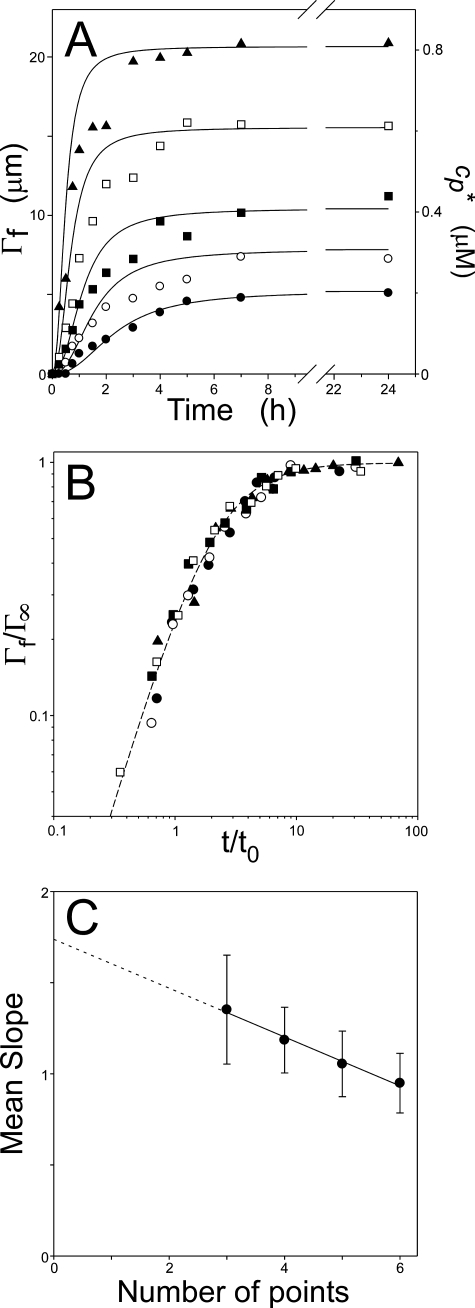FIGURE 2.
Time dependence of thiazine red-mediated tau fibrillization. A, recombinant full-length human tau (•, 0.4 μm; ○, 0.5 μm; ▪, 0.6 μm; □, 0.8 μm; ▴, 1 μm) was incubated at 37 °C in the presence of 100 μm thiazine red inducer, with aliquots removed and assayed for filament formation by electron microscopy. Each point represents the total length of all filaments per field (Γf) averaged from three negatives at the indicated incubation time, whereas the solid lines represent the best fit of all time series to an equilibrium nucleation model constrained so that n = 2, ke+ = 9.5 × 104 m-1 s-1, and ke- = 0.019 s-1 (see “Results” for details). B, demonstration of data collapse. The data from panel A were replotted with normalized axes Γf/Γ∞ versus t/t0, as described previously (21), except that the characteristic time, t0, corresponded to the time when each series was 37% complete. C, the number of intermediate assembly stages of the nucleus, k, was estimated from the initial slopes of each time series shown in panel B by fitting the first 3–6 data points of each time series to a linear regression, then replotting the average slope of those lines (±S.E. of the estimate) against the number of data points examined (19). The solid line represents best fit of the data points to a linear regression, which was extrapolated to zero to yield 1.73 ± 0.19 as an estimate of k + 2. Therefore, k ∼ 0.

